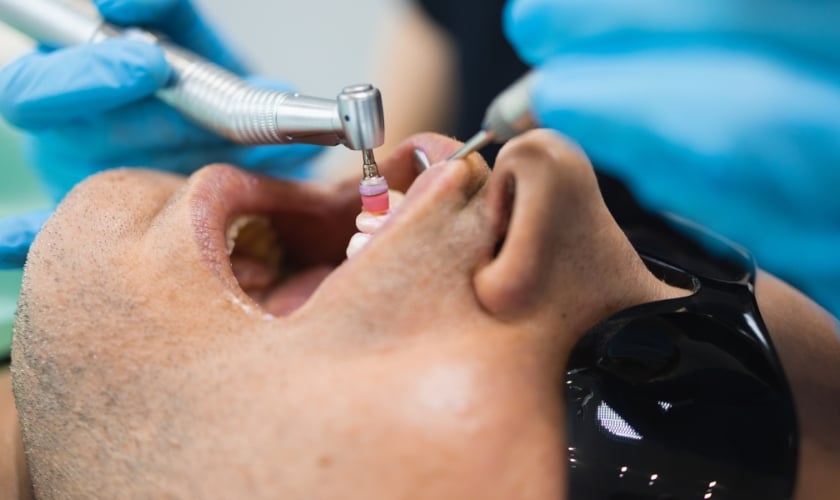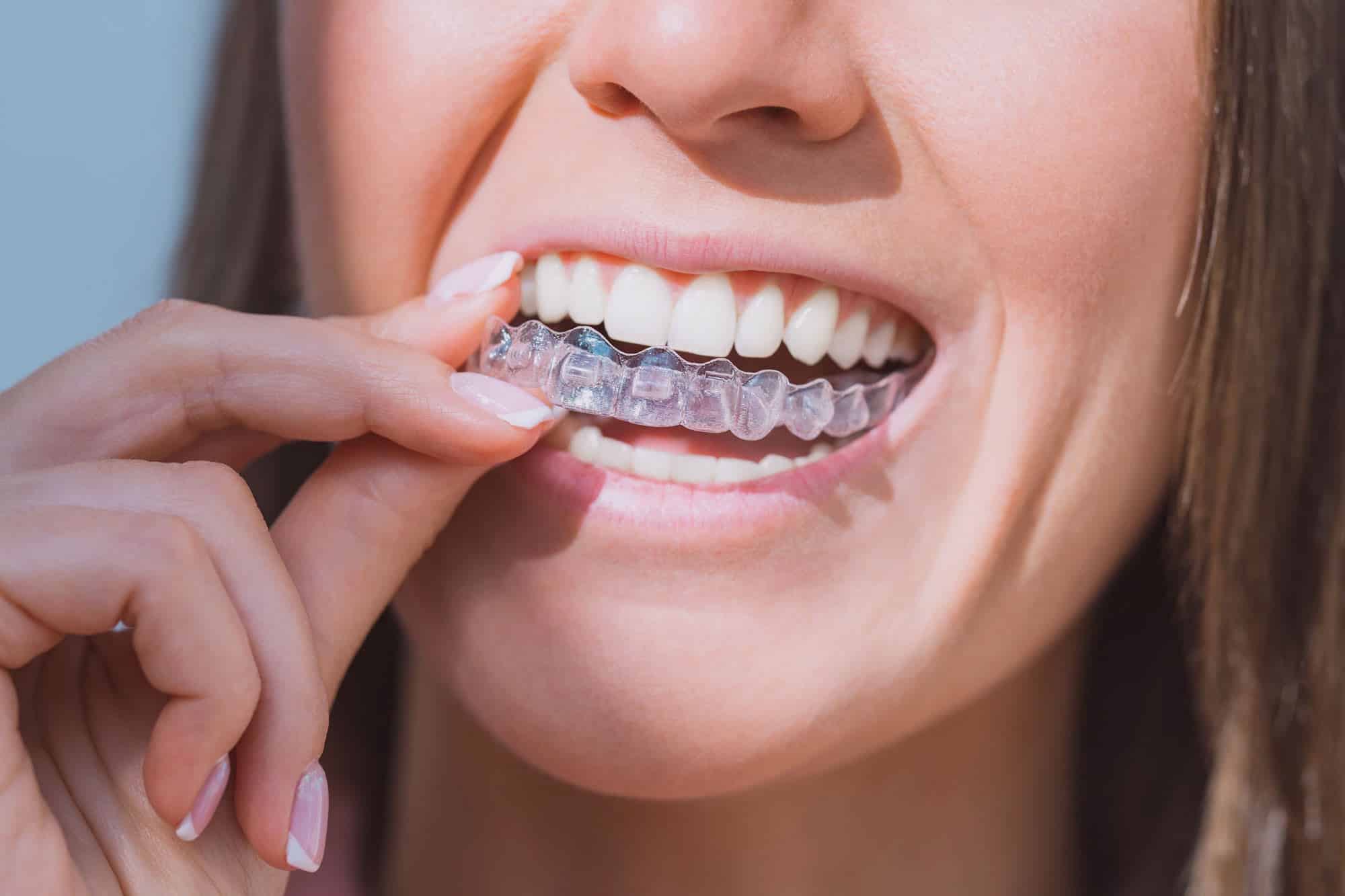Transforming Smiles with Clear Aligners for Overbite Correction

The quest for a perfect smile now takes an exciting turn with the transformative power of clear aligners. In the dynamic landscape of orthodontics, these transparent wonders have emerged as silent architects of change, especially when it comes to correcting overbites. This journey explores the subtle art of realignment. We’ll also offer insights into how clear aligners are rewriting the narrative of orthodontic transformation.
Understanding Clear Aligners
Clear aligners represent a remarkable leap forward in orthodontic technology, revolutionizing the way we approach teeth realignment. These transparent, custom-designed trays are not just aesthetically appealing but also boast a sophisticated engineering marvel.
These aligners are crafted from a specialized BPA-free plastic, ensuring durability, flexibility, and clarity. The process begins with a comprehensive assessment of the patient’s dental structure. It includes leveraging advanced 3D scanning technology to create a precise digital model. This model becomes the blueprint for the fabrication of a series of aligners, each subtly different from the last.
Clear aligners not only correct misalignments but also cater to the unique anatomy and needs of each patient. The tailored approach ensures a more comfortable experience, reducing the likelihood of discomfort often associated with traditional braces.
What is an Overbite?
An overbite, clinically known as a malocclusion, occurs when the upper front teeth overlap the lower front teeth. As a result, it creates a vertical displacement. This dental misalignment can manifest in varying degrees, with some cases being subtle while others are more pronounced. A crucial aspect of comprehending overbites lies in recognizing the two main types: vertical overbite and horizontal overbite:
Vertical Overbite: This type involves the vertical overlap of the upper front teeth over the lower front teeth. It can range from mild, where the overlap is minimal, to deep, characterized by a significant vertical displacement. A deep vertical overbite may contribute to issues like premature wear of the incisors and potential discomfort in the jaw.
Horizontal Overbite: In this case, the upper front teeth protrude horizontally over the lower front teeth. Similar to vertical overbites, horizontal overbites can vary in severity. More severe horizontal overbites may lead to aesthetic concerns and potential challenges in biting and chewing.
Causes of Overbites
- Genetics: Hereditary factors play a significant role, with genetics influencing jaw and tooth development.
- Thumb-Sucking and Pacifier Use: Prolonged habits like thumb-sucking or pacifier use in childhood can impact dental alignment.
- Malformation of the Jaw: An abnormal growth pattern of the upper or lower jaw can contribute to overbites.
- Missing or Misaligned Teeth: Irregularities in tooth development or missing teeth can disturb the natural alignment.
- Injury or Trauma: Accidents or injuries to the face or jaw can disrupt the normal positioning of teeth, leading to overbites.
Recognizing an Overbite
Identifying an overbite involves a visual assessment and consideration of potential symptoms:
- Visual Overlap: The most apparent sign of an overbite is a visual overlap of the upper front teeth over the lower front teeth when the mouth is closed. In front of a mirror, close your mouth and observe the alignment of your upper and lower front teeth. If the upper teeth cover a substantial portion of the lower ones, an overbite might be present.
- Vertical Displacement: Assess the vertical alignment of your front teeth. An overbite involves a vertical displacement, where the upper teeth extend over the lower ones.
- Jaw Discomfort: Some individuals may experience jaw pain, especially when biting or chewing, associated with an overbite.
- Speech Impediments: Overbites can sometimes contribute to speech difficulties due to the altered positioning of teeth. If you notice speech difficulties, such as lisping or challenges with certain consonant sounds, it could be related to the overbite affecting tongue and teeth coordination.
How Do Clear Aligners Help in Correcting Overbites?
Let’s explore how these transparent wonders work their magic in overbite correction:
Customized Treatment Plans
Clear aligners leverage advanced 3D scanning technology to create a precise digital model of the patient’s teeth. Based on this digital blueprint, a series of custom-fit aligners is created. Also, each is designed to address specific tooth movements throughout the treatment.
Gradual, Controlled Pressure
Clear aligners apply controlled and gradual pressure to targeted teeth, guiding them into the desired positions over time. The treatment plan is carefully mapped out, specifying the sequence of aligners and the expected movement at each stage. This predictability allows for a well-controlled correction process.
Versatility in Overbite Correction
Clear aligners are versatile in correcting both overjets and overbites. The precision in design and fabrication allows them to target specific tooth movements needed for overbite correction. The treatment plan is tailored to the unique needs of each patient, ensuring that the aligners address their specific overbite characteristics.
Precision in Alignment
Advanced digital technology allows for precise treatment planning, predicting the movement of teeth at each stage. The sequential sets of aligners, each slightly different from the last, ensure a controlled and predictable progression toward the desired overbite correction.
Tips for Maintaining Clear Aligners
Consistent Wear and Compliance: Follow the prescribed wear schedule diligently, typically ranging from 20-22 hours a day. Recognize that your active participation in wearing the aligners as instructed is crucial for achieving the desired results within the estimated timeframe.
Oral Hygiene Practices: Clean your aligners daily with a soft toothbrush and clear, antibacterial soap to prevent the buildup of bacteria and plaque. Opt for clear, unscented soap to prevent any potential discoloration of the aligners.
Rinse After Removal: Rinse your aligners with lukewarm water each time you remove them to maintain freshness and cleanliness. Please refrain from using hot water, as it can compromise the shape and effectiveness of the aligners.
Brush and Floss Before Reinsertion: Brush and floss your teeth before reinserting aligners to prevent potential staining caused by trapped food particles. The alignment process is more effective in a clean oral environment.
In the ever-evolving tapestry of orthodontic innovation, clear aligners emerge as not just corrective tools but as silent champions of self-expression and confidence. With clear aligners, your smile becomes a testament to the artistry of transformation, reflecting the confidence that radiates from within. The symphony of aligners and smiles is an ode to the harmonious blend of science and self-discovery. Cheers to the journey of transformation, where each aligned tooth narrates a story of resilience and the triumph of confidence!





